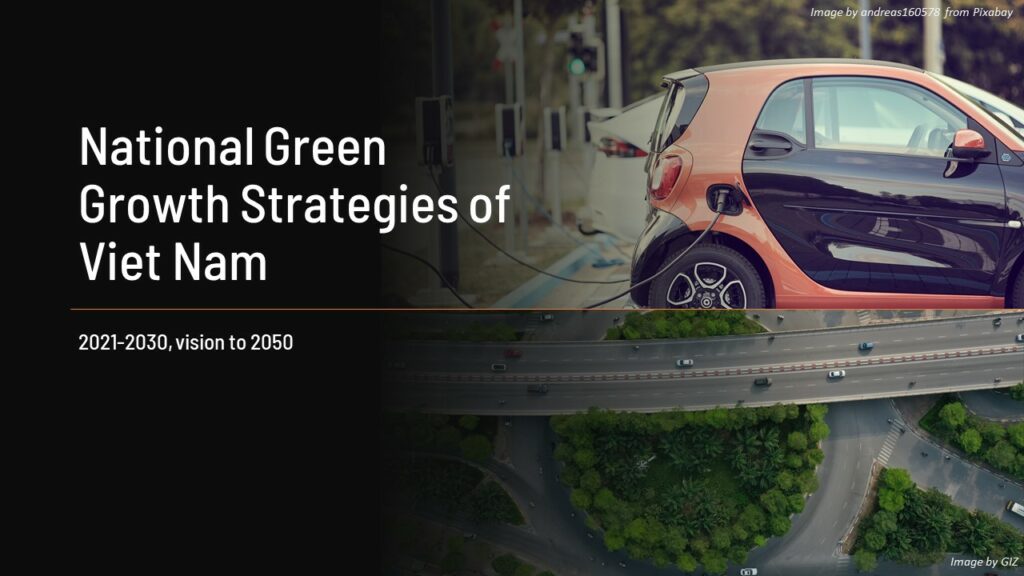
The government of Viet Nam has been vigorous in establishing its targets and commitments on greenhouse gas (GHG) emission reduction, aiming to secure economic prosperity and environmental sustainability for future generations. This is reflected in the updated Nationally Determined Contribution (NDC) 2020, the recent commitment of achieving ‘net zero’ by 2050 stated by the Prime Minister in COP26 and the National Green Growth Strategy (NGGS) approved on 1 October 2021.
The Viet Nam NGGS for 2021-2030, vision to 2050 is drafted with careful consideration of the country’s new development orientation to help Viet Nam accelerate the implementation of the committed GHG emission reduction targets. This strategy will act as a springboard for the government to set even higher targets and specific measures to deliver the goal of “net-zero” by 2050.
The new NGGS contains many advanced and improved contents compared to the NGGS 2011-2020 and the updated NDC 2020.
Firstly, the specific objectives in the new NGGS are: Reduce the intensity of GHG emission per unit of GDP by at least 15% by 2030 compared to 2014, and 30% by 2050 compared to 2014. This is an innovative point compared to the previous targets which only take into account the Business-as-usual (BAU) GHG emission volume.
Secondly, additional aspects of science and technology, digital technology application, digital transformation and social issues are proposed to target a goal of developing a principled, equitable, inclusive, and resilient green transition across the entire economy.
Thirdly, the new NGGS put more stress on investment and finance for green growth, which creates a more solid foundation to mobilise resources for green growth mission implementation, not only from the state budget and ODA but also from the private sector. The key missions of the Ministry of Planning and Investment (MPI) mentioned in the updated NGGS include:
With respect to the transport sector, in Resolution No. 29/2021/QH15 dated 28 July 2021 on the Medium-term public investment plan in the 2021-2025 period, around 40% of the total investment capital is allocated to transport. As one of the main emitters of GHG emissions, transport is also highlighted in the new NGGS. Five main tasks are assigned to the Ministry of Transport (MOT):
Both approaches, climate change mitigation and adaptation are mentioned for the transport sector in the new NGGS. Key solutions on e-mobility development are established to achieve carbon neutrality. The task of digital technology application in green transport development is also a superior point compared to previous strategies and updated NDC.
During the “National strategies for enhancing climate ambition – systemic transformations and their enablers” Side Event Of the United Nations Second Global Sustainable Transport Conference, Ms Tran Minh Hue, Official of the MPI, elaborated on Viet Nam’s strategies for enhancing climate ambition in the transport sector. Ms Hue indicated that MPI would promote more active solutions in the transport sector as well as enhance the financial mobilisation for implementation. In particular, MPI orients to promote environmentally-friendly vehicles, including electric vehicles, and digitalisation applications in transport management optimisation and traffic infrastructure operation.
The new NGGS will be a premise for the MPI and MOT to issue specific guidance on the implementation of policies and programs to promote green transport investment, contributing to the achievement of Viet Nam’s ambitions and goals on climate change and green growth.